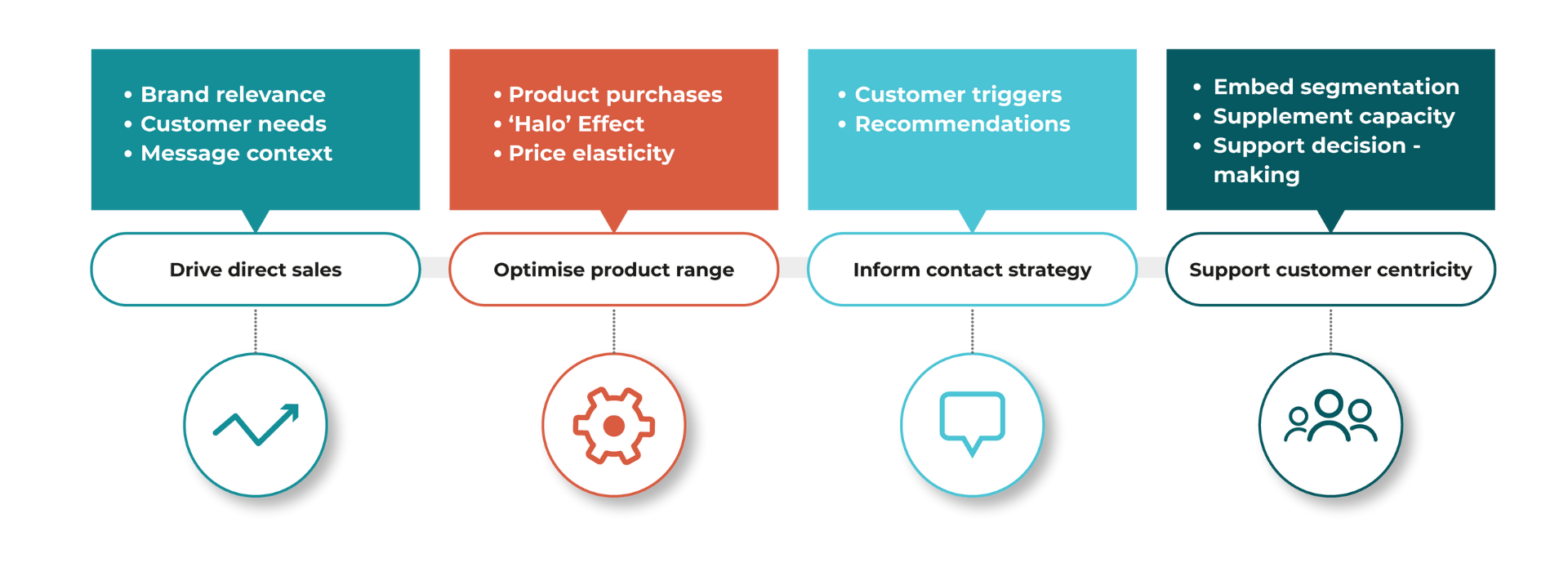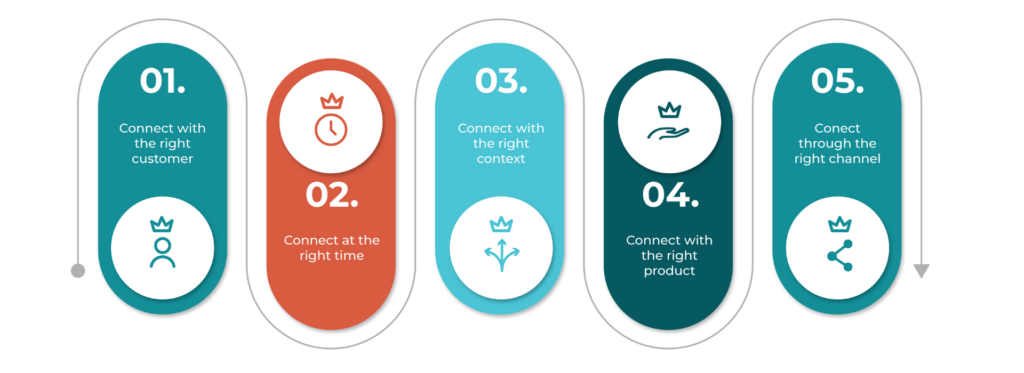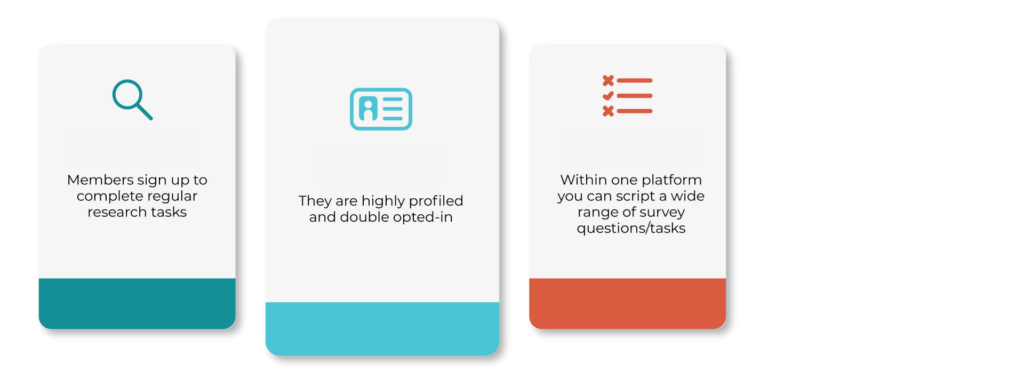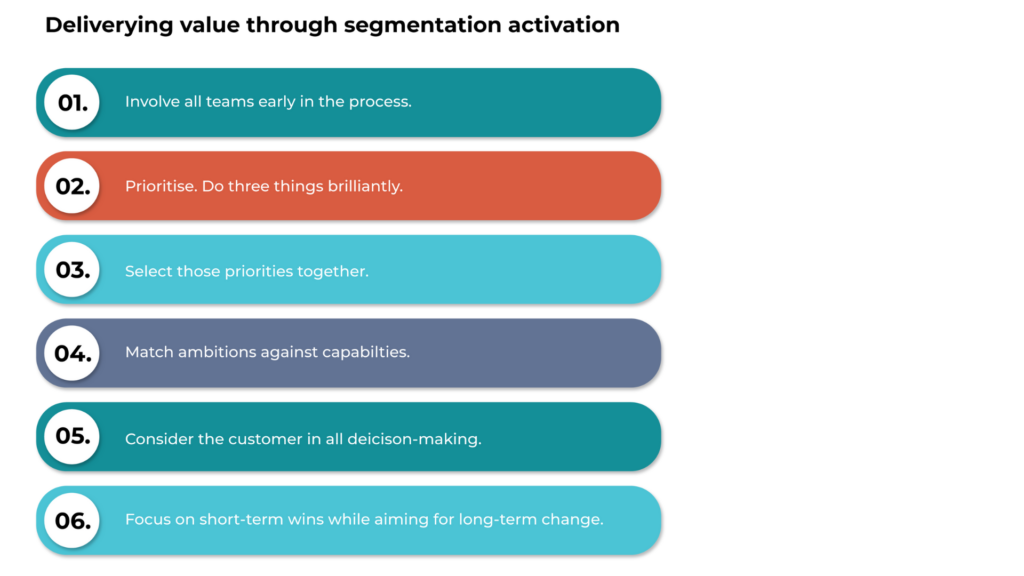In blogs one and two of this series, we dealt with what segmentation activation is and why you need it. In this final blog, we will show you how you can put segmentation into action. In particular, how it can help you ‘be everywhere’ and ‘adapt all of the time’.
How to ‘be everywhere’
It can seem like a daunting prospect to try and be where the customer is at any given moment. The customer ‘sees’ you in your branding. In your product range. In your product. In the price you’re asking. Or in the promotion you’re offering. Not just via your website, your store and your social media. When you’re activating your segmentation, all of these customer touchpoints must come into play.
To achieve this, we should think of activating segmentation in four different ‘buckets’ — each containing one or more of those customer touchpoints:

We can use segmentation to get the context of our sales messages right. We can use it to inform our contact strategy. We can use it to uncover who’s buying what and how we can change our product range accordingly. And we can use it to support our longer-term decision-making as a business.
In effect, we can boost our impact by using segmentation activation to answer five of the most fundamental questions when it comes to customer centricity:

Of course, there is still one more hurdle to overcome. And that is to actually deliver on this and demonstrate ROI. With all the promise that segmentation activation brings, our challenge is to create something that works commercially, while preparing for the long-term, but within a short timeframe.
We know the value of a strong segmentation model and creating a link between segmentation and our customer database. We know the importance of working alongside all stakeholders to support customer-centricity. Now we just need to know where to focus our immediate efforts to deliver impact.
Here at Bonamy Finch, we do that by limiting the number of use cases we initially recommend. In fact, our mantra at this early stage is to say, “Do three things brilliantly.” (Although, it might actually be two or four, but you get the picture.) You can’t always do everything. But you can get started. And if you’re looking to transform what you do and become truly customer-centric and agile then you can also create a step-by-step plan for that at the same time.
All we need to do is to frame it as a simple 2×2 matrix. What is going to give us the highest impact for the lowest effort? Once you know, do that first. Everything else will need some development work and you can set aside time and resources to tackle those.
Taking your segments beyond activation
Once you know the priorities of your business it becomes much easier to understand which data is important to you, how you can use that data to influence action and who in your team needs to know. But what about after your activation? Segmentation is NOT a big data set that gradually gets more useless over time, so how can you make the most out of segments in the long-term? How can you bring segmentation to life?
An Insight Community is an ideal example of how to speak to, listen to and engage with customers and get results back quickly. You can use this kind of community to apply and activate your segmentation by simulating and testing the marketing activities you’re planning in advance.
There are three main advantages to using Insight Communities here. The first is that you get to see what’s working and what’s not working – in real-time. The second is that you reduce the risk of going all-in with a roll-out to your entire customer base. And the third is that by testing and measuring what works, you can use what you learn to set the direction of your longer-term strategies so they are grounded in fact rather than guesswork.
In an age when marketing departments are being asked to demonstrate impact, the ability to test what resonates with your segments provides powerful evidence. In the past, you may have had the copywriters and the art directors and the channel marketers all doing their thing and hoping that ‘the stars align’. Now, you can see which creative executions or channel approaches have the best response. In effect, you get it right first time.

Taking your segments beyond activation
Despite what seems like a daunting task, your brand can ‘be everywhere’ simply by understanding where your customers are. This means looking beyond customer relationship management (CRM) and the website as the key touchpoints. It goes back to the involvement of multiple areas of the business as discussed in blog one. As well as selecting short-term priorities while still planning for the future.
Crucially, marketing agility can set you apart from the crowd. While most marketers struggle to know what to do with their data, the ability to proactively test your marketing (or your product development, or anything else for that matter) in real-time becomes a competitive differentiator. While others will need to wait months to see the results of their latest campaign or product line extension, you will already know what impact it’s likely to have. In fact, you will have already decided what to act upon in advance, so you’ll know that your customers will respond positively. Not only does this enable marketing agility but it gives you demonstrable ROI.
And as we have seen across this blog series, being everywhere and gaining real marketing agility are only possible with segmentation activation.
Key takeaways
Your 6-point plan for delivering value growth through segmentation activation:


